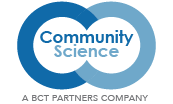In our ever-evolving world, where once-stable systems are fading away, the social sector is facing unprecedented challenges. There’s a growing call for us to rise to the occasion and bridge the gaps in needs, resources, services, and connections within our communities. With so much to accomplish, the ‘to-do’ list can become the strategy and quickly become overwhelming for any single organization, stretching staff and resources thin and placing our impact at risk. It can be daunting to navigate the moral dilemma of not being able to respond to every need that arises.
Amid these constant changes, the key question becomes how we can maintain our focus without diluting our efforts to enhance our community’s resilience.
I find inspiration in nature and its remarkable ability to adapt to disruptions within its ecosystems. When faced with challenges, nature doesn’t shy away; instead, it reassesses whether to promote growth, conserve, release, undergo collapse, or reorganize. These adaptive strategies help nature find new configurations to thrive, especially when limits are tested.
When nature reaches its resilience capacity, even the slightest disturbance can trigger significant challenges, as the system can no longer adapt or buffer against change. This is when a reset and the introduction of new elements become essential.
Trying to outgrow (i.e., that growing bucket list of to-dos!) or conserve (i.e., wait it out) only delays collapse. This is when a reorganization of the system nurtures the emergence of new or renewed strategies, policies, practices, and narratives to bring about new possibilities. The histories of past systems shape the reorganization of new or renewed strategies (i.e., looking out for possible unintended effects).
Systems are shifting with less predictability based on cause-and-effect relations and facts. Okay, so now what Nature?
A few considerations if your strategy needs a reorganization phase:
Strategy or overgrown list? Potential signals of an overgrown list:
- Sounds like a value statement or motivational speech
- Valuing equity or stating your organization is “about equity” alone is not a strategy. Being ambitious is not a strategy without the details about how an organization takes action to get to the root causes.
- Commitment, determination, and ambition are critical to bringing a strategy to life, but those alone do not make a strategy. Often, those turn into broad performance goals without a clear direction in place of a strategy.
- Consider: Where can ambition and determination be applied as unifying elements to support a cohesive response to core challenges?
- Inclusive of every possible action
- Being inclusive of multiple voices and perspectives is powerful, but being inclusive to avoid conflict or disappointing people leads to conflicting demands and interests in those actions, often resulting in a loss of focus, dilution efforts, or even confusion.
- Consider: What is the core issue or challenge your organization is tackling?
- Unbalanced big goals without focused purpose and direction
- Build the container to prioritize your “Big Hairy Audacious Goal” in a way that makes sense for your organization during this dynamic, rapidly changing environment.
- Consider: Why is your organization best situated to tackle those issues, and how will you concretely do it?
- A good strategy defines what is most essential to achieve beyond mere urging. Your strategy describes the biggest challenges in your ecosystem, quickly followed by stating what challenges only your organization can tackle and how. In uncertain times, a focused strategy is pivotal to help guide difficult decisions and trade-offs (e.g., what is the organization NOT going to do) and reassess what concrete priorities and activities to expend time, resources, and energy (e.g., why this strategy is meaningful to transform systems) (see previous blog). No strategy is perfect or immune to rapidly changing environments. I return to nature’s adaptive systems to understand what type of change an organization navigates—conservation, growth, release and collapse, or reorganization.
So, in moments of constant instability and chaos, it may be good to step back and reflect whether a reorganization phase is necessary for your organizational strategy.
Mighty Moment Tip
Review your organizational pathway of action steps (e.g., aligned priorities, activities, and interim results across the organization) to implement the strategy using a three-horizon approach. Map out your immediate actions (Horizon 1) and Horizon 3, describe your organization’s ‘why’ and ultimate impact.
What about Horizon 2? Exactly. Often, the interim phase of change is not clearly articulated or is displaced by immediate needs and long-term thinking. Here is where a broad or bucket list strategy can place strain or even exhaust an organization, which can become a barrier to a good, meaningful strategy.
- Horizon 1: List all the immediate actions to address the issues today.
- Horizon 2: Interim phase that describes how to build the capabilities, systems, and practices needed for the desired outcome (e.g., being specific about what staff and capacity need to be invested in, strengthened, or grown).
- Horizon 3: Uses continuous monitoring and iterates guided by learning from community engagement and measuring what matters, targeting the root causes of injustices, disparities, negative narratives, and other influencing factors. (see concurrent blog on data here).
Check for alignment in your pathway of actions across all three horizons. Alignment is an opportunity to draw on existing strengths and create new strengths through shifts of intentionality and focus.
Let’s Keep the Conversations Going
Be on the lookout for an invite to our May webinar, where we will discuss Maintaining Strategy Momentum in Uncertain Times in more depth.
Coming soon: We will share quick tips on a range of topics—strategy development, measuring what matters, capacity building, monitoring, and learning… and more! Have a topic you want to hear about? Let us know here.

About The Author
Amber Trout, Ph.D., Principal Associate, has extensive organizational and leadership development, change management, and capacity building experience in the nonprofit and philanthropic sectors. Most recently, she worked with the Institute for Nonprofit Practice to manage the implementation of their new learning agenda, the W.K. Kellogg Foundation to manage the evaluation of the Racial Equity Anchor Collaborative, and the Knight Foundation to map pathways of change and more for an equitable revitalization project.
